Highlights from ‘Canadian Housing Statistics Program, 2022’
The following statistics were released from the Economics and Statistics Division on August 21, 2024. For full details from this dataset, please click here.
The Canadian Housing Statistics Program (CHSP) provides information on the residential property stock, defined as all residential properties in a given geographic region, excluding vacant land. Residential properties include all land and structures intended for private dwelling purposes. A residential property may consist of one dwelling, as is common for single-detached housing, or multiple dwellings such as apartment buildings or row housing.
Property owner counts
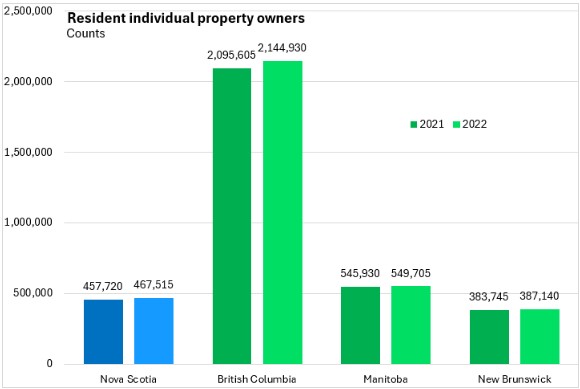
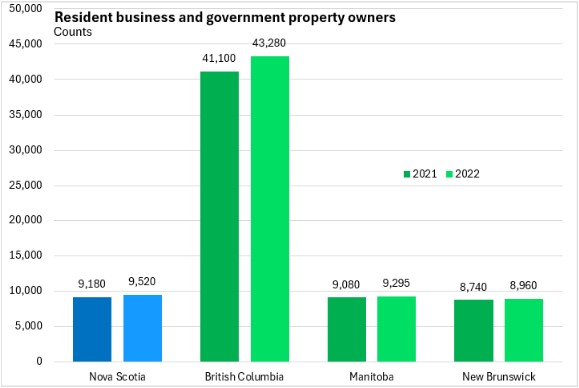
- In 2022 the number of resident individual and business and government property owners increased in all provinces reporting data
- Nova Scotia property owner counts grew 2.1% in individual property owners and 3.6% in business and government owned properties
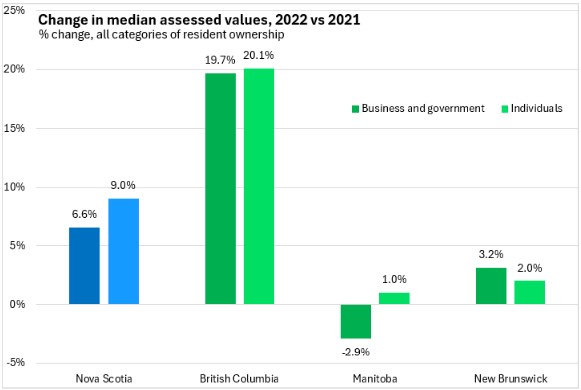
- Median assessment values were up for resident individuals across all provinces reporting data
- Nova Scotia reported the second strongest growth at 9.1%
Number of properties bought and sold
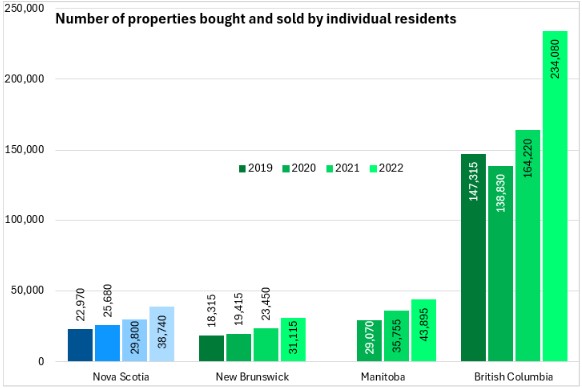
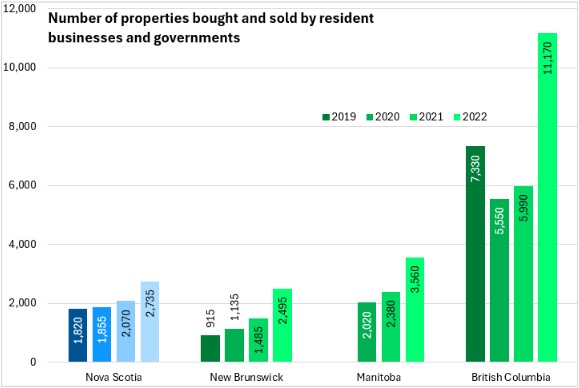
- The number or properties bought and sold by resident individuals, as well as resident businesses and governments were up across all provinces reporting data in 2022
- Nova Scotia’s gains in individual property counts were at 30.0% and at 32.1% for business and government
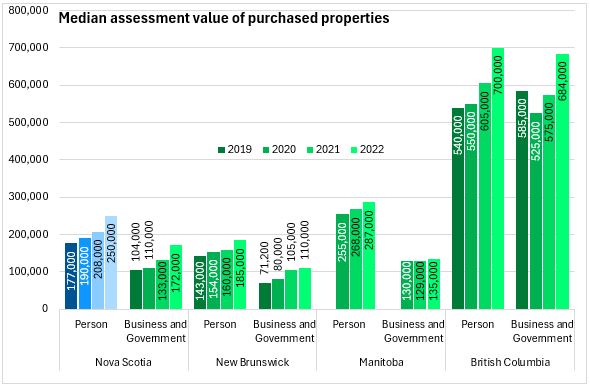
- The median assessment value of properties bought and sold by residents was up in 2022 across all provinces and categories
- Nova Scotia led in assessment value increases, with a 20.2% gain in individual sale values, and a 29.3% gain for those properties bought and sold by resident businesses and governments
